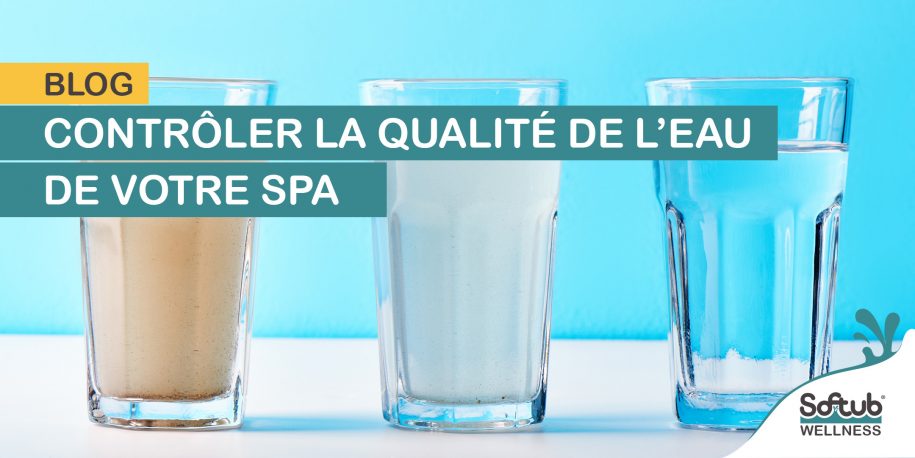5 factors to control the quality of your spa water
You bought a spa to relax, reduce stress, relieve tension. You don't know how you ever lived without your spa. It's great! But this time, when you lift the cover to get in, it's no longer the crystal clear water you're used to, but murky, smelly water.
What has happened? The pump and filter seem to be working, the water is warm and, apart from the look and smell, everything seems fine. You look at the manual and notice that it is recommended to test your water. You see words and numbers like PPM (parts per million), disinfectants, total alkalinity, PH+, PH - ... and some information about the possibility of hard water. All this scares anyone. You panic! You don't know what to do.
Although this is a classic scenario, water chemistry does not have to be terrifying or complicated to understand.
To help you understand what water balance means and how you can maintain it, let's look at the factors that determine the quality of your spa water one by one.
1- Total alkalinity :
If you thought that pH is important, you were right. But total alkalinity is even more important. Total alkalinity is the regulator of pH, if it is not balanced properly, the pH will not tell you a correct reading. Total alkalinity is the ability to control the pH.
Here's a simple way to understand the difference between pH and total alkalinity: think of pH as the thermometer on your boiler thermostat. The thermometer measures the exact temperature of the room. If it's a little colder, you turn up the thermostat. Total alkalinity is like the thermostat, in that it gives you the ability to control the pH. That's why you test and adjust the total alkalinity before you even touch your pH test kit.
Now you ask yourself, what if I don't keep the total alkalinity balanced? Let's take a quick look at the disadvantages that can result.
High total alkalinity :
- Difficulty in changing the pH
- Limestone formation
- Cloudy water
- Skin and eye irritation
- Poor effectiveness of the disinfectant.
Low total alkalinity:
- Rapid changes in pH
- Metals/equipment attacked by corrosion
- Skin and eye irritation
2- The PH level :
Some people consider it to be the main component of water balance. It measures how acidic or basic your water is. If it is not regulated, you risk damaging your equipment, i.e. heating elements, pump seals and internal parts. Below are the most common problems associated with high or low pH levels:
High pH levels :
- Poor disinfection efficiency.
- Cloudy water
- Limestone formation
- Shorter filtration periods
- Skin and eye irritation
Low pH level :
- Poor sanitizer efficiency
- Metal/equipment damaged by corrosion
- Skin and eye irritation
- Engraved or stained plaster
- Total alkalinity destruction
The ideal pH range for spas is 7.2 to 7.6. Anything below 7.2 means your water is acidic and if the pH reading is above 7.6 it means the water is basic or alkaline.
3- Lhe calcium hardness :
Calcium hardness is a measure of the minerals in your water, including calcium and magnesium. You want your water to have a certain level of hardness or softness. If the water does not have enough calcium, it will attract other minerals, including copper, aluminium and iron. This will cause corrosion of the equipment. If the hardness is too high, you will see scale build up inside the spa and the water will look cloudy.
Hardness too low :
- Deterioration of metal components of spa equipment
- Unwanted moss
Hardness too high
- Scale formation on surfaces
- Cloudy water
Calcium hardness is the measure of the hardness or softness of your spa water, and measures the amount of dissolved calcium and magnesium. Like pH and total alkalinity, it is important to keep calcium hardness balanced to prevent your spa water from becoming corrosive or scaling. However, before looking to balance the calcium hardness level of your spa, make sure your alkalinity level is properly balanced first, then the pH and finally the calcium hardness.
4- Disinfection :
As you know, organisms such as bacteria and viruses like to reproduce in all types of water, especially in hot water. Disinfectants effectively purify the water and keep it smelling fresh. The most common ones are chlorine and bromine.
5- Spa shock:
These are chlorine-free shock treatments that eliminate odours and reduce irritating pollutants for fresh, clear water. Remember that due to high temperatures and heavy bathing loads, spas require higher levels of disinfectant, as well as higher amounts of oxidant to remove bathing residues and keep the water crystal clear.
You are now able to control the water quality of your spa, to complete your learning, you can also read our article about spa water maintenance, you will find explanations about maintenance systems, filtration, sanitation and many other valuable information.


